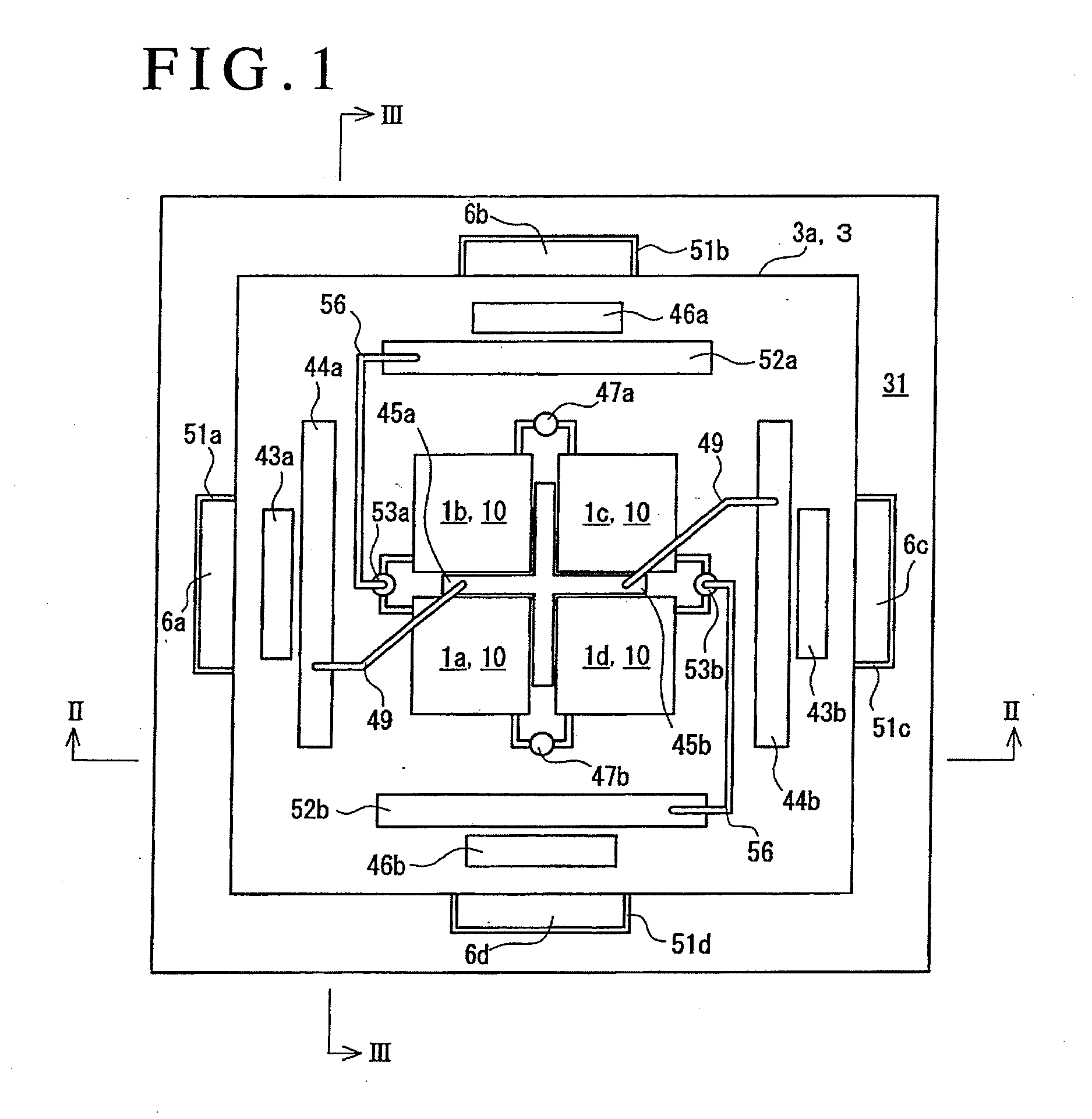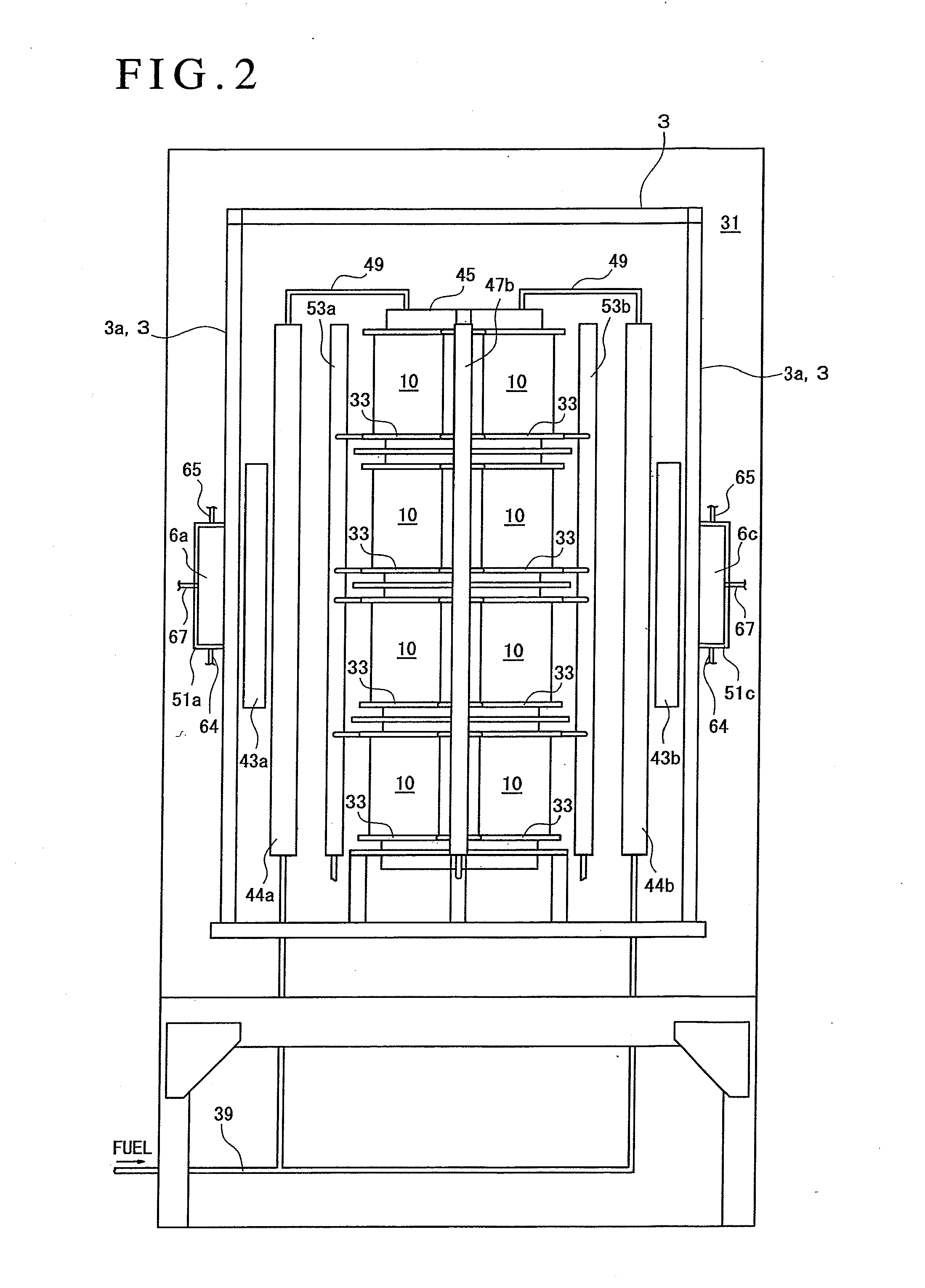Solid oxide fuel cell
- Summary
- Abstract
- Description
- Claims
- Application Information
AI Technical Summary
Benefits of technology
Problems solved by technology
Method used
Image
Examples
Embodiment Construction
[0040]Hereinafter, embodiments of a flat plate solid oxide fuel cell according to the present invention will be described by referring to FIGS. 1 to 7B.
[0041]As illustrated in FIG. 5, a fuel cell according to the present embodiment is configured to have a fuel cell stack 10 which has an external appearance of a substantially rectangular columnar shape and laminates a plurality of power generation cells 16, which includes a fuel electrode layer 12 disposed on one surface of a solid electrolyte layer 11 and an air electrode layer (oxidant electrode layer) 13 disposed on the other surface thereof, by interposing a separator 2 between the power generation cells.
[0042]In addition, a fuel electrode current collector 14 is interposed between the fuel electrode layer 12 and the separator 2 of the power generation cell 16 and an air electrode current collector 15 is interposed between the air electrode layer 13 and the separator 2.
[0043]Here, the solid electrolyte layer 11 is formed into a d...
PUM
 Login to view more
Login to view more Abstract
Description
Claims
Application Information
 Login to view more
Login to view more - R&D Engineer
- R&D Manager
- IP Professional
- Industry Leading Data Capabilities
- Powerful AI technology
- Patent DNA Extraction
Browse by: Latest US Patents, China's latest patents, Technical Efficacy Thesaurus, Application Domain, Technology Topic.
© 2024 PatSnap. All rights reserved.Legal|Privacy policy|Modern Slavery Act Transparency Statement|Sitemap



